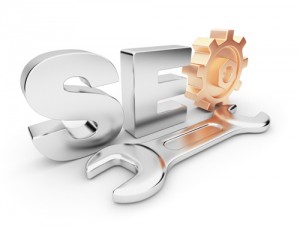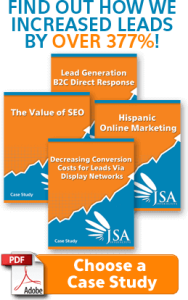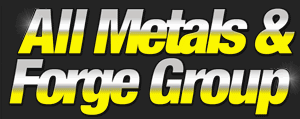
SEO Help: Glossary
Looking for SEO help? When we work with you, you might find it helpful to be familiar with some of the terms we use in the world of search engine optimization.
Great communication makes for great results, and since we’re all about great results, we’ve compiled this short glossary of some of the most common SEO lingo so we’re all speaking the same language.
Above the Fold
A newspaper term that refers to the top half of the front page that you can see without opening or unfolding your paper. For websites, it refers to the space of a site visible without having to scroll, in a typical web browser. Actual results may vary, since there are countless different screen configurations, monitor sizes, browsers and more that can affect what a particular end user might view, but generally speaking, any content in the first 600-800 pixels (vertical) would be considered “above the fold.”
Algorithm
Search engines use algorithms to return relevant websites in their rankings. Algorithms are complex math formulas that use a sequence of instructions to solve a problem. In this case, the “problem” is what results should be displayed to a user when they search for something. The algorithms are used to determine that.
Alt attribute
A part of the code your website uses to display an image. Alt-text tells the search engines what your image is actually an image of, so the spiders can sort it in the proper place. This is an important part of SEO because it provides more information about your site to the search engines, which, in turn, means you’ll be much more visible.
Analytics
Tools that track and report a visitor’s actions on your website, such as how they got there, their landing page, their exit page, what they clicked on while they were there, and much more.
Backlink
Term for a link from another website that points back to your website.
Black Hat
Term for SEO tactics that violate Google’s rules and guidelines. A good example is called “cloaking,” wherein a website owner shows content to a visitor that is entirely different from the content a search engine spider is served.
Call to Action
A phrase in advertising copy that tells the reader what to do next – buy something, fill out a form, etc.
Click-Through-Rate
The rate at which users click on a specific link when it’s served up with a variety of other links with related subject matter.
Conversion
Whenever a visitor to your site performs a desired action – buys a product, for example – they’ve been “converted.”
Crawl
The process of a search engine spider navigating and indexing the content of your web pages.
Domain Name
A website’s address.
Duplicate Content
Content on one page on the web which can be found on another page or other pages around the web. Too much duplicate content can be a detriment to your website when it comes to search engines, because it can lower your value and rank or get you de-indexed entirely.
External Links
A link on one domain that leads to another domain.
Google Bot
The name of the robot Google uses to spider your site.
Index
The database of information a search engine uses to deliver results.
Keyword
A word or phrase for which a website wishes to rank highly when a search engine user queries it.
Keyword Density
Keyword density refers to the number of keywords on a page in relation to the number of other words on that page.
Link Farm
A page that was built specifically to link to other pages to increase ranking.
Link Spam
Content made for the sole purpose of linking on another website to take advantage of its higher rank.
Long-Tail Keyword
Multiple word search queries that are very specific.
Meta Description
The description of a page found directly under the URL on a search engine results page, can be helpful with increasing CTR.
Meta Tag
Various tags are found in the first section of a website’s code that instruct search engine spiders and provide information about your site to them.
Outbound Links
A link on your page leading to a different website.
PageRank
This is one of the algorithms Google uses. It determines how the authority of a link on one page can pass to another, on a scale from 0 to 10.
Query
A term typed by a search engine user. Can also describe the act of performing the search.
Reciprocal Link
Two websites linking back to each other to boost rankings.
Relevancy
How well a page relates to a query. Search engine spiders consider relevancy when ranking pages.
Search Vertical
A search on a search engine that allows you to further narrow down your searches, such as Googling for video only.
SERP
Short for “search engine results page”, this is the page that shows you the results of your searches.
Sitemap
A list of all the pages on a domain that users can use to easily navigate the site and search engine spiders can use to discover new pages and content on your website.
Spam
Term used to describe unwanted or useless content, particularly ads sent via email.
Spiders
Computer-driven content collectors, also sometimes called bots.
Static Page
A page with content that never changes.
Subdomain
A subdomain is used to further uniquely identify a domain name, for example, blog.yoursite.com and forum.yoursite.com.
Title Tag
The title of a page, found in the very top bar of the browser window. It’s also the text that will appear when a user bookmarks the page, unless otherwise specified.
URL
Short for Uniform Resource Locator. The address of a specific page on a website is its URL.
URL Rewrite
Changing the URL of your website.
User Data
Collected user behavior on a website.
Website Age
The age of a website, which affects the ranking of that website. Search engines assign higher value to sites that have been around longer.
White Hat
SEO practices that do not violate a search engine’s guidelines.
Your Next Step
Remember: we not only work hard to get great results – we also work to educate you and your team in the process! To get started, simply request a quote, tell us what you need, and a JSA Interactive representative will be in touch soon to discuss your options and how we can help. And for more information on what we’ve done for our clients so you can get an even better idea of what we can do for you, we invite you to please check out one (or all!) of our free case studies, available for download instantly.













